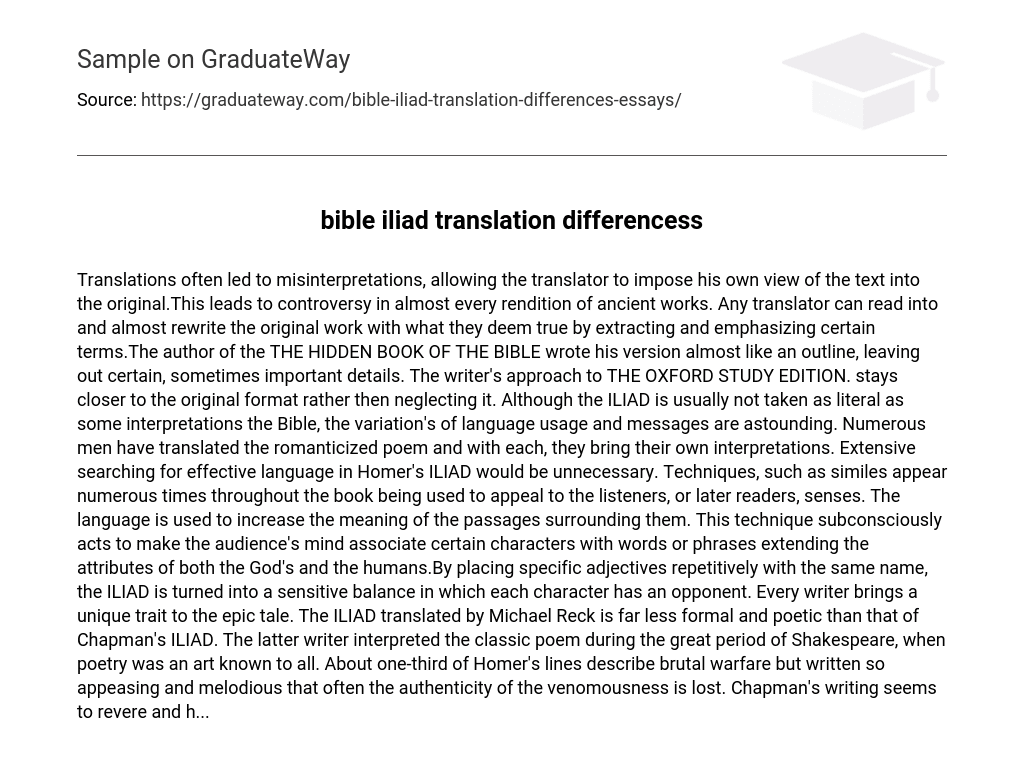Translations often led to misinterpretations, allowing the translator to impose his own view of the text into the original.This leads to controversy in almost every rendition of ancient works. Any translator can read into and almost rewrite the original work with what they deem true by extracting and emphasizing certain terms.The author of the THE HIDDEN BOOK OF THE BIBLE wrote his version almost like an outline, leaving out certain, sometimes important details. The writer's approach to THE OXFORD STUDY EDITION.
stays closer to the original format rather then neglecting it. Although the ILIAD is usually not taken as literal as some interpretations the Bible, the variation's of language usage and messages are astounding. Numerous men have translated the romanticized poem and with each, they bring their own interpretations. Extensive searching for effective language in Homer's ILIAD would be unnecessary. Techniques, such as similes appear numerous times throughout the book being used to appeal to the listeners, or later readers, senses. The language is used to increase the meaning of the passages surrounding them.
This technique subconsciously acts to make the audience's mind associate certain characters with words or phrases extending the attributes of both the God's and the humans.By placing specific adjectives repetitively with the same name, the ILIAD is turned into a sensitive balance in which each character has an opponent. Every writer brings a unique trait to the epic tale. The ILIAD translated by Michael Reck is far less formal and poetic than that of Chapman's ILIAD. The latter writer interpreted the classic poem during the great period of Shakespeare, when poetry was an art known to all.
About one-third of Homer's lines describe brutal warfare but written so appeasing and melodious that often the authenticity of the venomousness is lost. Chapman's writing seems to revere and h…





